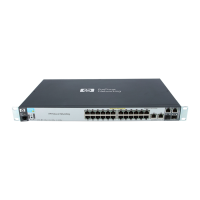78 • Configuration HP NonStop SSL Reference Manual
TARGETPORT 1023
Considerations
• Starting with HP NonStop SSL AAE this parameter is not ignored anymore in run mode FTPC but can be used
to specify the default port number in case none is given in the FTPC user command.
• You can specify a comma-separated list of multiple target ports; see section "Multiple SSL Tunnels in a Single
Process" for details.
See also
TARGETPORTFORCE
TARGETPORTFORCE
This FTPC only parameter can be used in combination with TARGETPORT to force the override of the target port in the
FTPC user command. HP NonStop SSL will use the TARGETPORT (if set) in FTPC to default to a certain port if none
is given in the actual user command. If TARGETPORTFORCE is specified in addition, the value of TARGETPORT
will always be taken as port to connect to, no matter what the user actually specifies in the FTPC user command.
Parameter Syntax
TARGETPORTFORCE {TRUE|FALSE}
Default
FALSE
Example
TARGETPORTFORCE TRUE
See also
TARGETPORT, TARGETHOSTFORCE
TARGETSUBNET
Use this parameter to specify the TCP/IP process a HP NonStop SSL process should use for outgoing connections.
Parameter Syntax
TARGETSUBNET tcpip-process-name
Arguments
tcpip-process-name
the name of an existing TCP/IP process on your system.
Default
If omitted, the HP NonStop SSL process will use same TCP/IP process which is configured for incoming connections
(SUBNET parameter).
Example
TARGETSUBNET $ZTC03
Considerations
• If you added a DEFINE =TCPIP^PROCESS^NAME to the TACL environment you use to start SSLOBJ, this
setting will override the TARGETSUBNET parameter.

